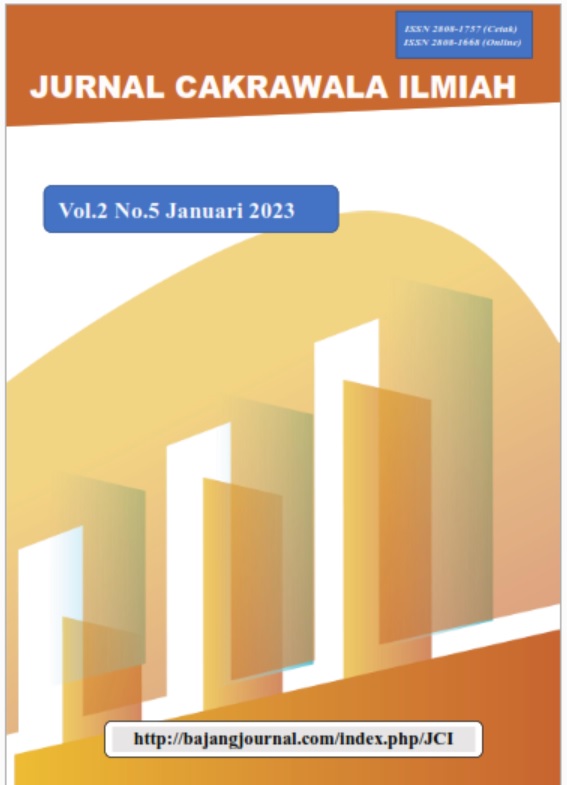INOVASI KUE BAKPIA BERBASIS UBI KAYU SEBAGAI PEMANFAATAN PRODUK UNGGULAN DI DESA BUMI WANGI CIPARAY KABUPATEN BANDUNG
DOI:
https://doi.org/10.53625/jcijurnalcakrawalailmiah.v2i5.6281Keywords:
Kue Bakpia, Ubi Kayu, Produk Unggulan, Desa Bumi Wangi CiparayAbstract
Bumi Wangi Village in Bandung Regency has experienced rapid development in recent years. One sector that is growing rapidly is the food industry, especially bakpia production. Bakpia is one of the regional specialties which has become a culinary icon of Bumi Wangi Village. However, to remain competitive in an increasingly competitive market, innovation is needed to keep bakpia attractive to consumers. This study aims to develop innovations in bakpia products by utilizing cassava as the main ingredient. Cassava was chosen because of its abundant availability in the surrounding area, as well as having high nutritional value and health benefits. The use of cassava in bakpia is expected to provide added value to the product and at the same time empower local cassava farmers. The research method used is exploratory research, starting with a survey of the potential of cassava and bakpia in Bumi Wangi Village. Furthermore, trials and development of bakpia recipes with various flavors and fillings were carried out, including the use of cassava as one of the main ingredients. Evaluation is carried out through organoleptic tests and business feasibility analysis. The results showed that the use of cassava in bakpia gave a unique taste sensation and attracted the attention of consumers. Cassava can also increase the fiber and nutrient content in bakpia products, thus providing health benefits for consumers. In addition, the abundant availability of cassava in the area can reduce production costs and increase profitability for bakpia producers. The bakpia innovation by utilizing cassava is expected to become a superior product that can expand the bakpia market share from Bumi Wangi Village to regional and national levels. The application of this innovation is also expected to have a positive impact on local cassava farmers, by increasing demand for cassava raw materials and opening opportunities for cooperation between bakpia producers and farmers. Thus, this innovation is expected to support economic growth in Bumi Wangi Ciparay Village, Bandung Regency, as well as maintain the existence of bakpia culinary as a local cultural heritage
References
Agustin, T. I., Satriya, A., Winarno, I., & Herman, H. (2014). Program Hi-Link: Budidaya dan Pengolahan Singkong Menjadi Mocaf (Modified Cassava Flour) Untuk Peningkatan Kesejahteraan Ekonomi Masyarakat Petani Singkong di Kabupaten Sampang-Madura. Seminar Nasional 2014 Hasil Pengabdian Masyarakat.
Anam, C. (2016). Pengelolaan home industry usaha bakpia di Kabupaten Klaten. Asian Journal of Innovation and Entrepreneurship (AJIE), 1(01), 30-38.
Gusnadi, D., Taufiq, R., & Baharta, E. (2021). Uji Oranoleptik Dan Daya Terima Pada Produk Mousse Berbasis Tapai Singkong Sebegai Komoditi Umkm Di Kabupaten Bandung. Jurnal Inovasi Penelitian, 1(12), 2883-2888.
Gusnadi, D. (2019). Analisis Uji Organoleptik Tapai Singkong Pada Produk Cookies Sebagai Upaya Meningkatkan Eksistensi Tapai Singkong Di Kota Bandung. Jurnal Akrab Juara, 4(5), 73-80.
Muharnif, M., Syaputra, S. A., & Harahap, M. (2021). Review Mesin Pengiris Keripik Singkong Untuk Home Industri. Atds Saintech Journal Of Engineering, 2(2), 29-37.
Downloads
Published
How to Cite
Issue
Section
License
Copyright (c) 2023 Jurnal Cakrawala Ilmiah

This work is licensed under a Creative Commons Attribution-NonCommercial 4.0 International License.
















